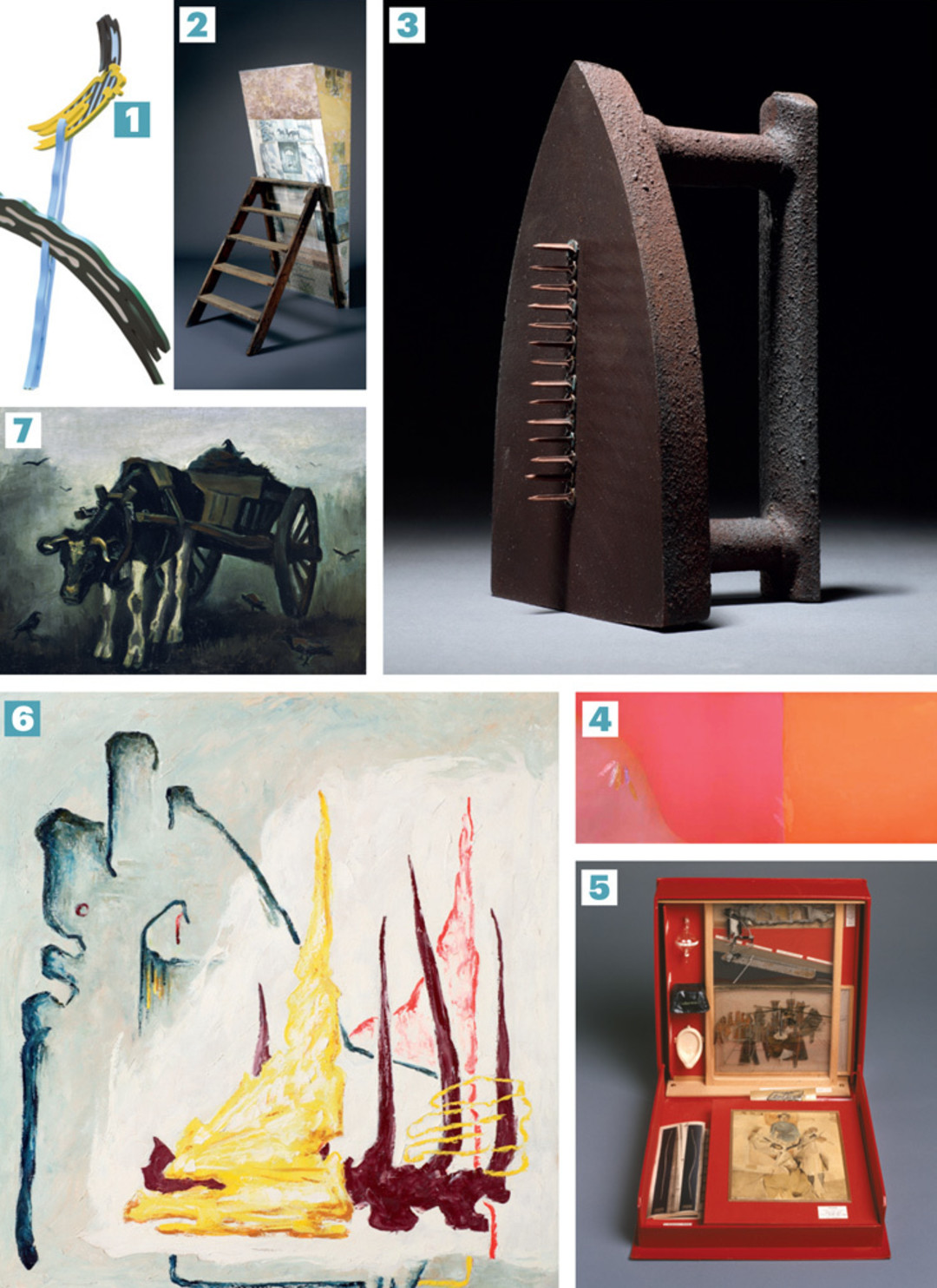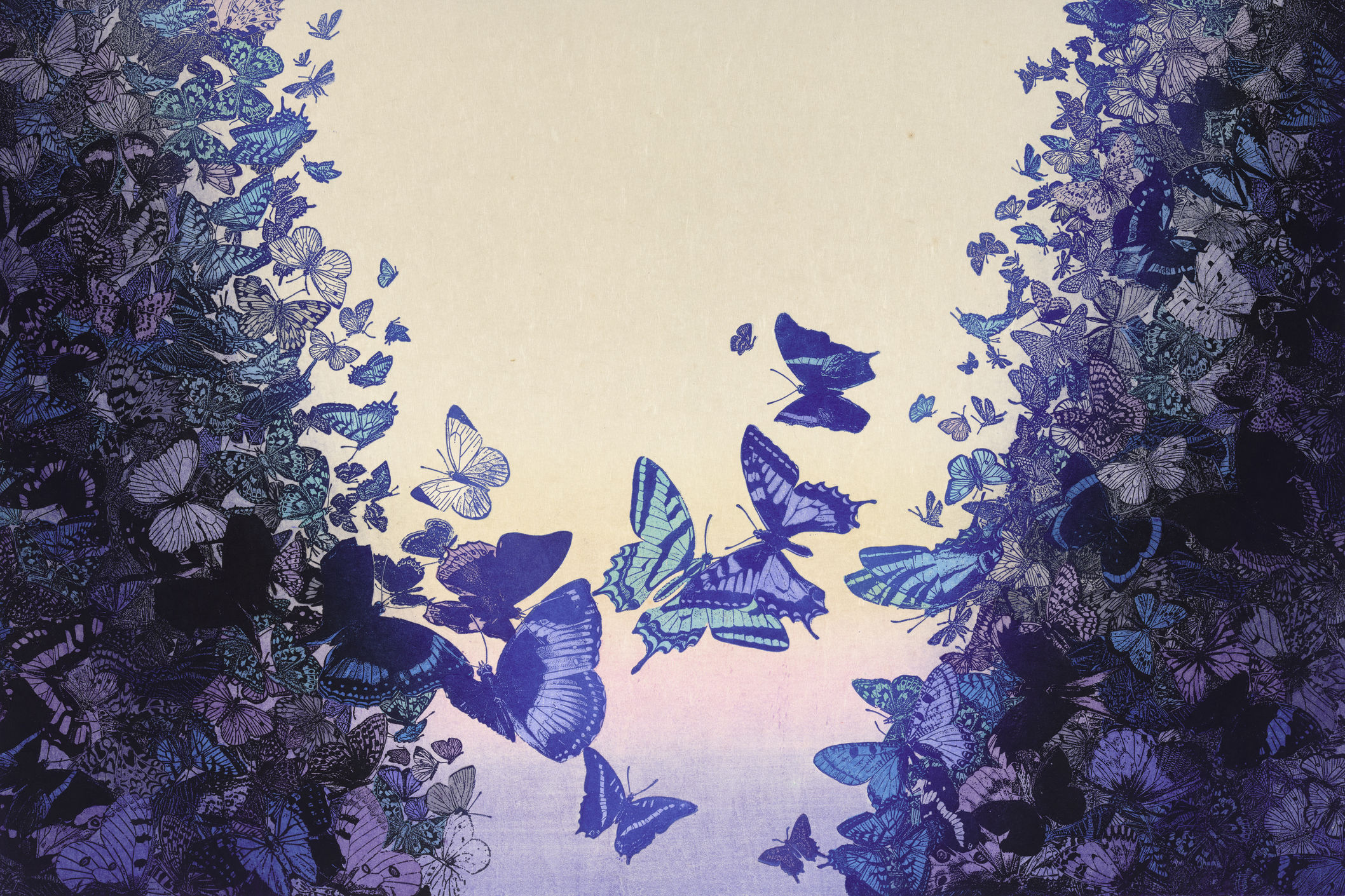7 Major Scores of the Portland Art Museum’s Former Chief Curator

Bruce Guenther, the Portland Art Museum’s former chief curator, was on a field trip to New York with Sarah Miller Meigs, one of Portland’s most prominent private collectors. At the famed Tallex foundry, the pair saw one of pop art master Roy Lichtenstein’s 30-foot-tall, multimillion-dollar Brushstrokes sculptures (1). Meigs remembers Guenther saying, “Wouldn’t it be amazing for the Portland Art Museum to own one?” He also had an idea of who might buy it: Meigs’s mother, lumber matriarch Prudence Miller. They met. Guenther told stories, he recalls, for three hours. A year later, they sealed the deal. Brushstrokes now stands at the corner of the museum’s Mark Building for all strolling the South Park Blocks to see: one of 4,327 works that Guenther, by his count, acquired during his 14-year reign as chief and contemporary arts curator. “Bruce tells great stories,” says Meigs, who, at Guenther’s encouragement, endowed a contemporary art program at the museum. “He might be bullshitting, but I love his stories anyway. He makes art come alive.”
Before his abrupt October retirement, Guenther played many roles, from rebuilding the museum’s entire seven-member curatorial team to curating exhibits. His last, In Passionate Pursuit: The Arlene and Harold Schnitzer Collection and Legacy, shows through January. But his additions to the museum’s permanent collection will be his most enduring legacy. Here’s a small sample of Guenther’s significant catches.
2. Guenther nudged Blue Sky Gallery cofounder Christopher Rauschenberg to ask his famed artist father, Robert, to donate a work to Blue Sky to secure the gallery’s financial future. He then helped orchestrate a deal involving a downtown developer and a local collector, who bought the work for the museum. Presto: Blue Sky now owns its Pearl District space, and the museum owns Patrician Barnacle, one of Rauschenberg’s three-dimensional collages, which the artist called “combines.”
3. Few know the museum’s vaults better than collections and exhibitions director Donald Urquhart. For enduring importance, he points to a midcentury piece that Guenther and his partner, Dr. Eduardo Vides, gave to the museum themselves: Man Ray’s Iron, PAM’s only true surrealist piece.
4. Museum director Brian Ferriso and others routinely point to Guenther, upon his arrival, landing famed art critic Clement Greenberg’s personal collection. The 159 works instantly rectified PAM’s weakness in midcentury art. The collection’s six paintings by Larry Poons proved to be worthy bait for another important piece: Poons’s Open Country, netted from Seattle megacollectors Virginia and Bagley Wright.
5. Guenther himself believes one of his most important acquisitions was his first as PAM’s chief curator: Marcel Duchamp’s Boîte-en-valise. Besides a connection to the past (the museum shocked locals by exhibiting the French artist’s Nude Descending a Staircase in 1914), Guenther says he wanted to “make a statement” that his tenure would include conceptual and idea-based art. Guenther began a career at PAM in the ’70s as an intern. “He has had such a long and deep understanding of the evolution of the institution and its patrons,” says modern art historian Patricia Failing. “It’s been a very nuanced stewardship.”
6. Developer Bonnie Serkin recalls Guenther, who knew her fondness for biological forms, yelling to her and pointing across art-fair crowds and galleries to paintings she instantly loved. That rapport helped secure a big catch: Serkin’s promised gift of her untitled painting by Clyfford Still, one of the rare pieces by the artist to reach the market, which she bought at auction with Guenther. “Those little, invaluable prompts,” Serkin says, “lead to the successful big asks.”
7. Howard Sohn and his brothers weren’t sure what should happen to the Vincent van Gogh painting hanging in their parents’ Roseburg home. Some wanted to sell it; others wanted to rotate possession between them. The first thing they agreed on: loan it to PAM and get an insurance appraisal. Three months later, Guenther netted The Ox-Cart as a gift: the first van Gogh to go to a Northwest museum.




